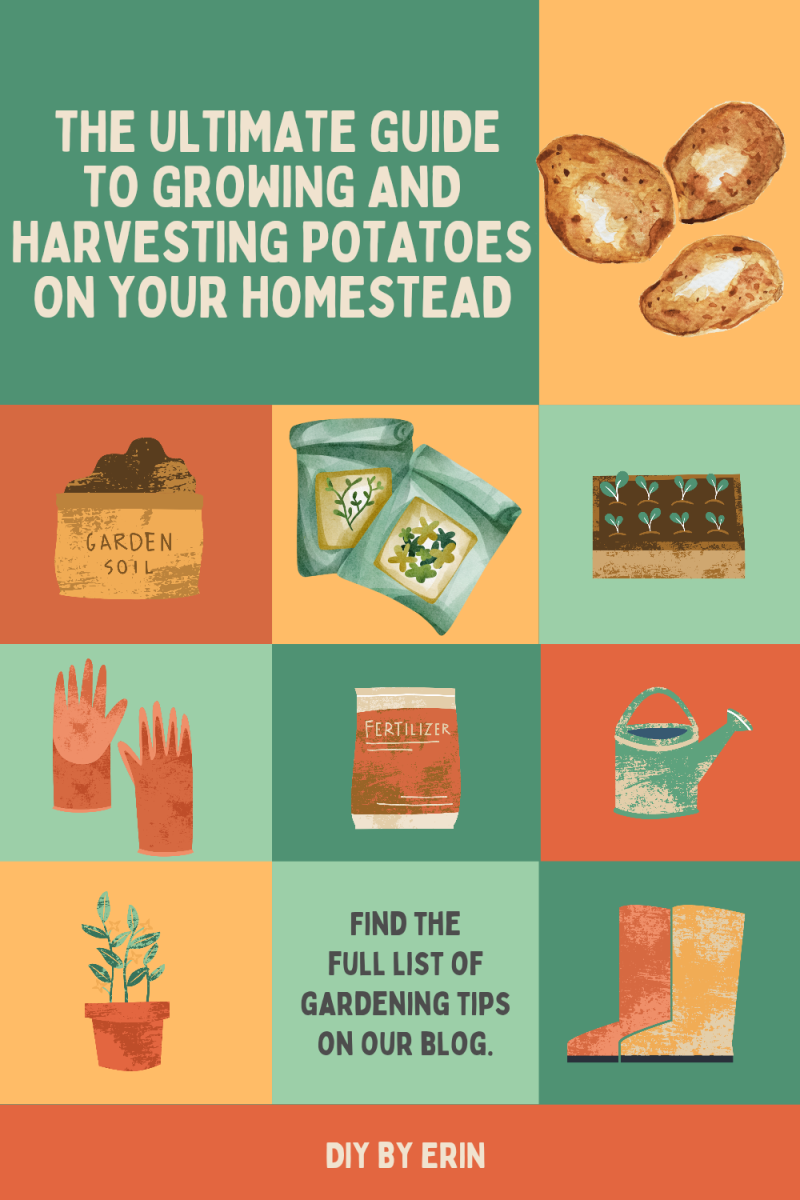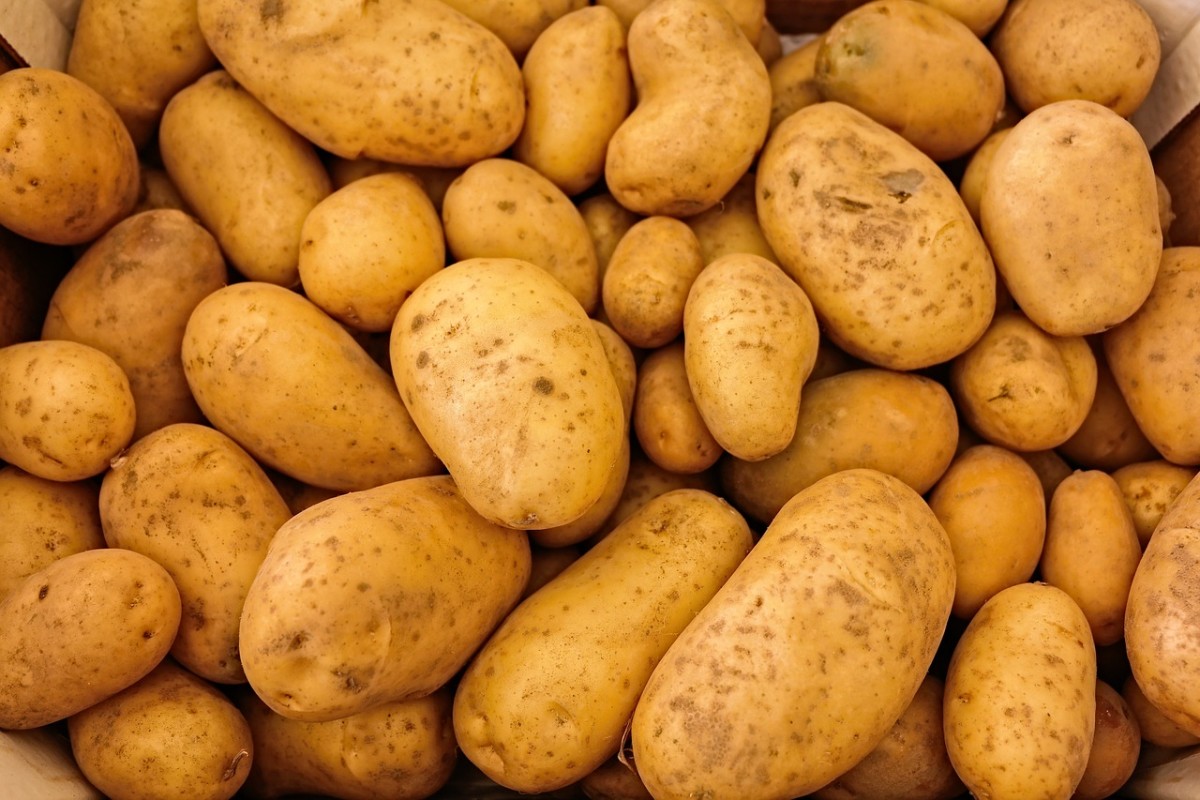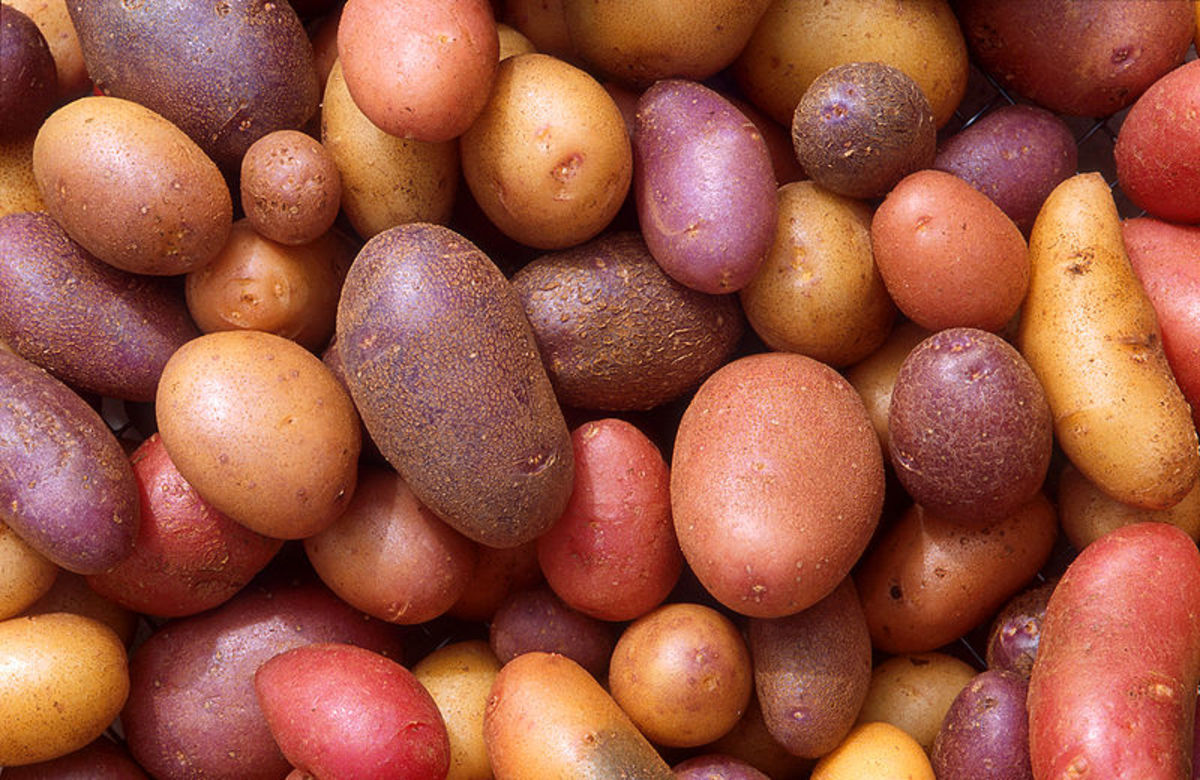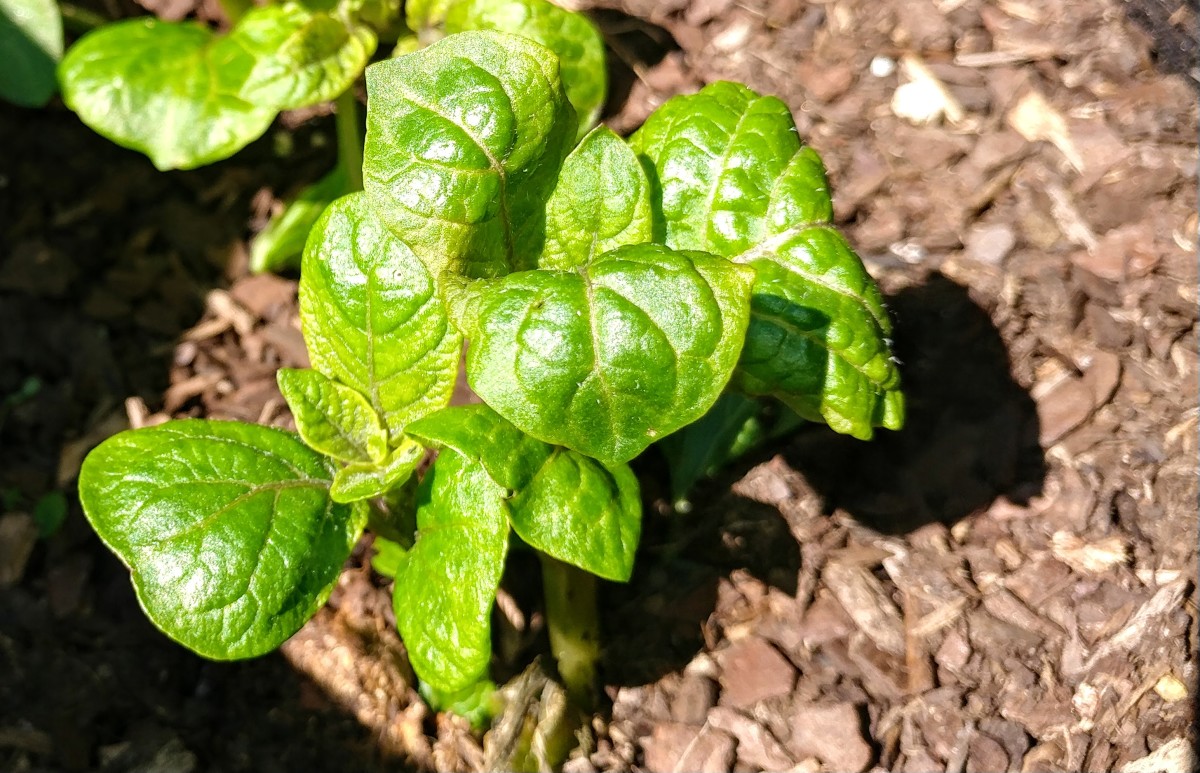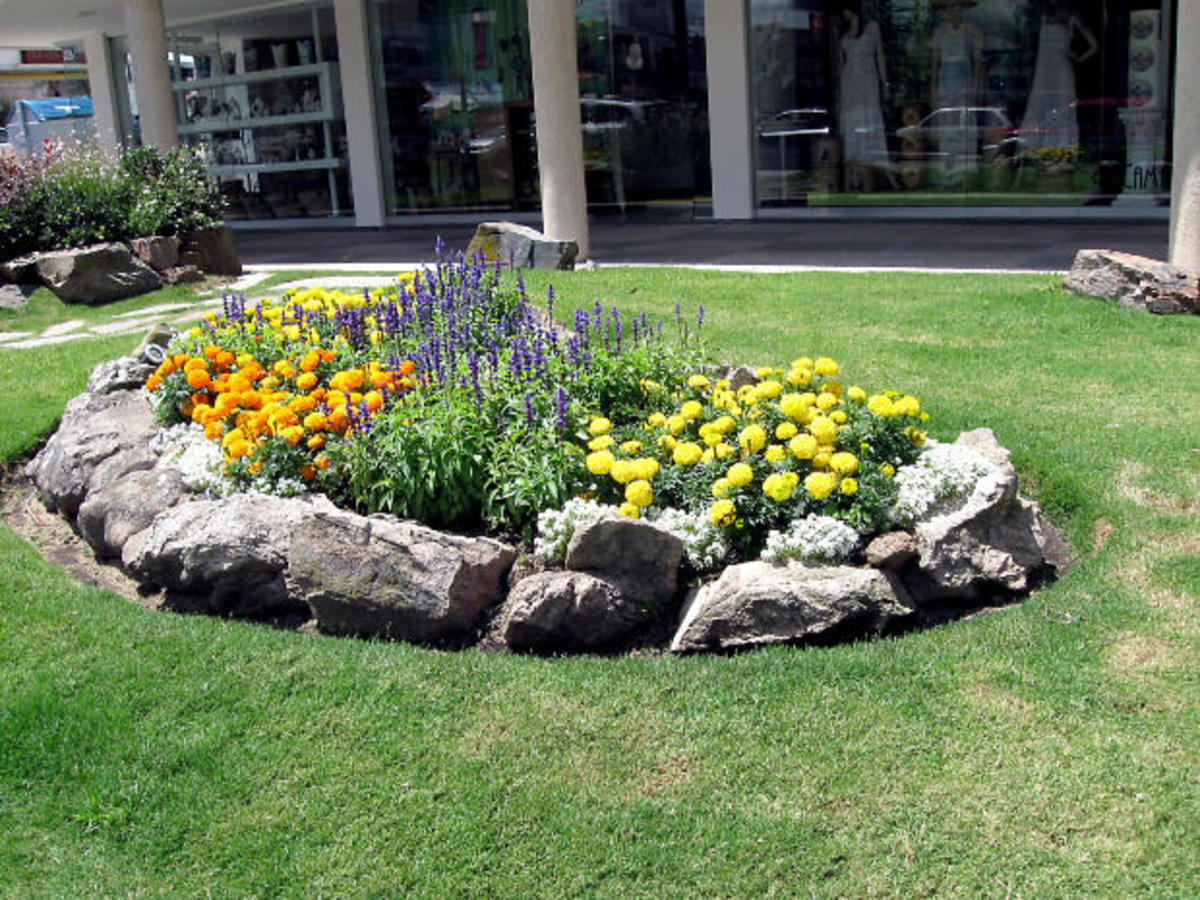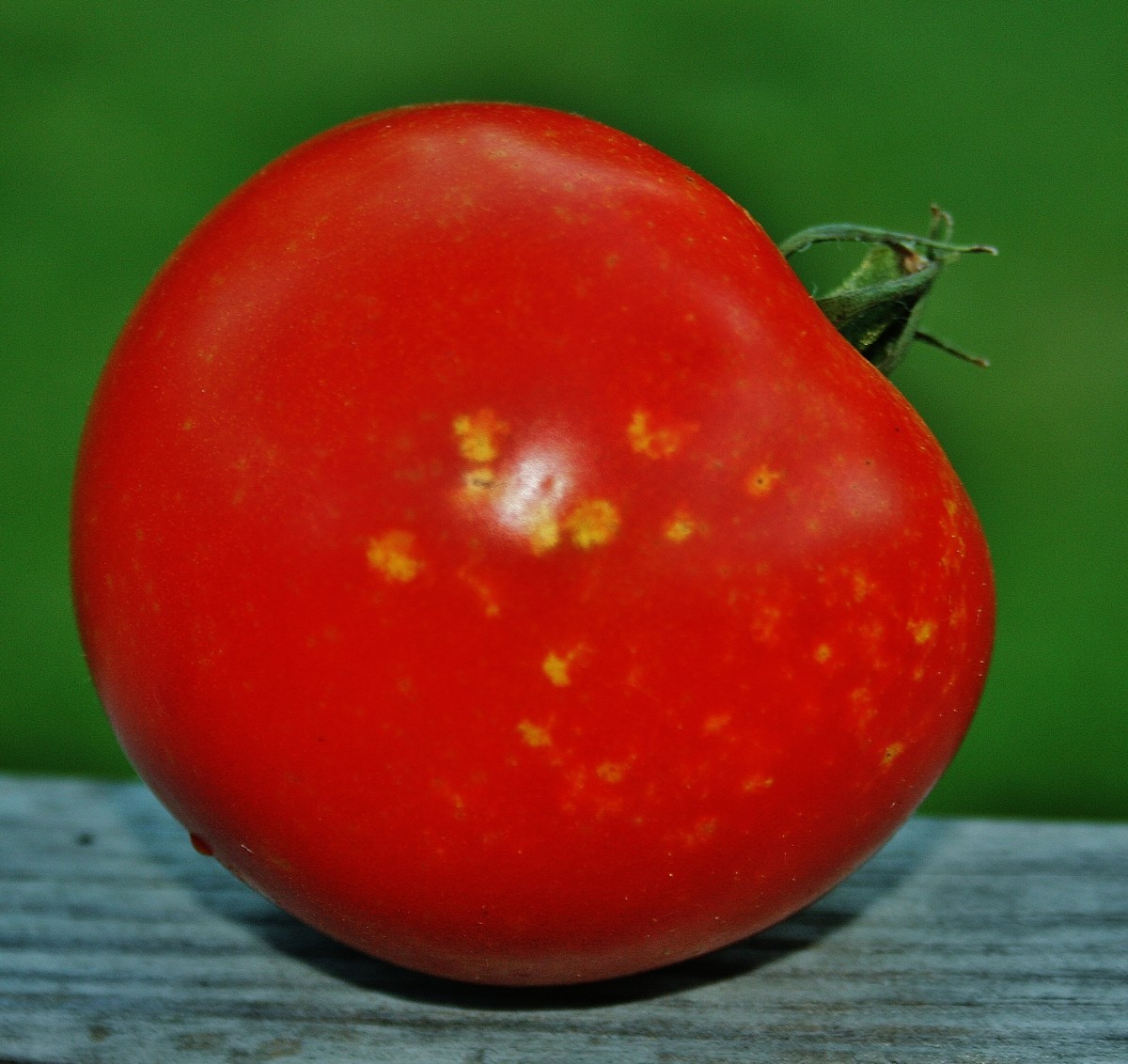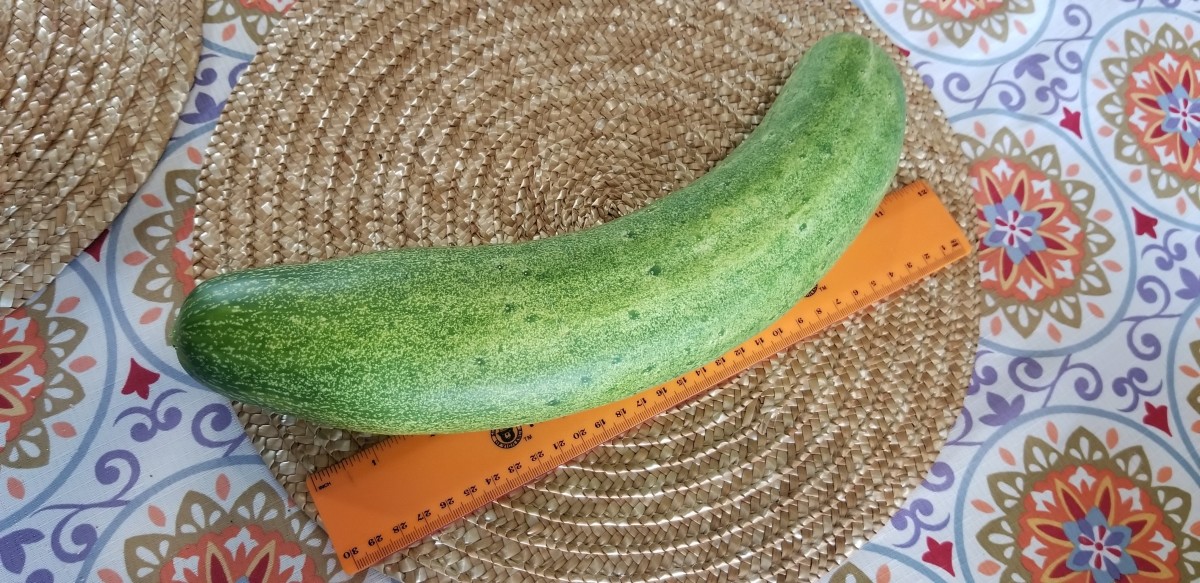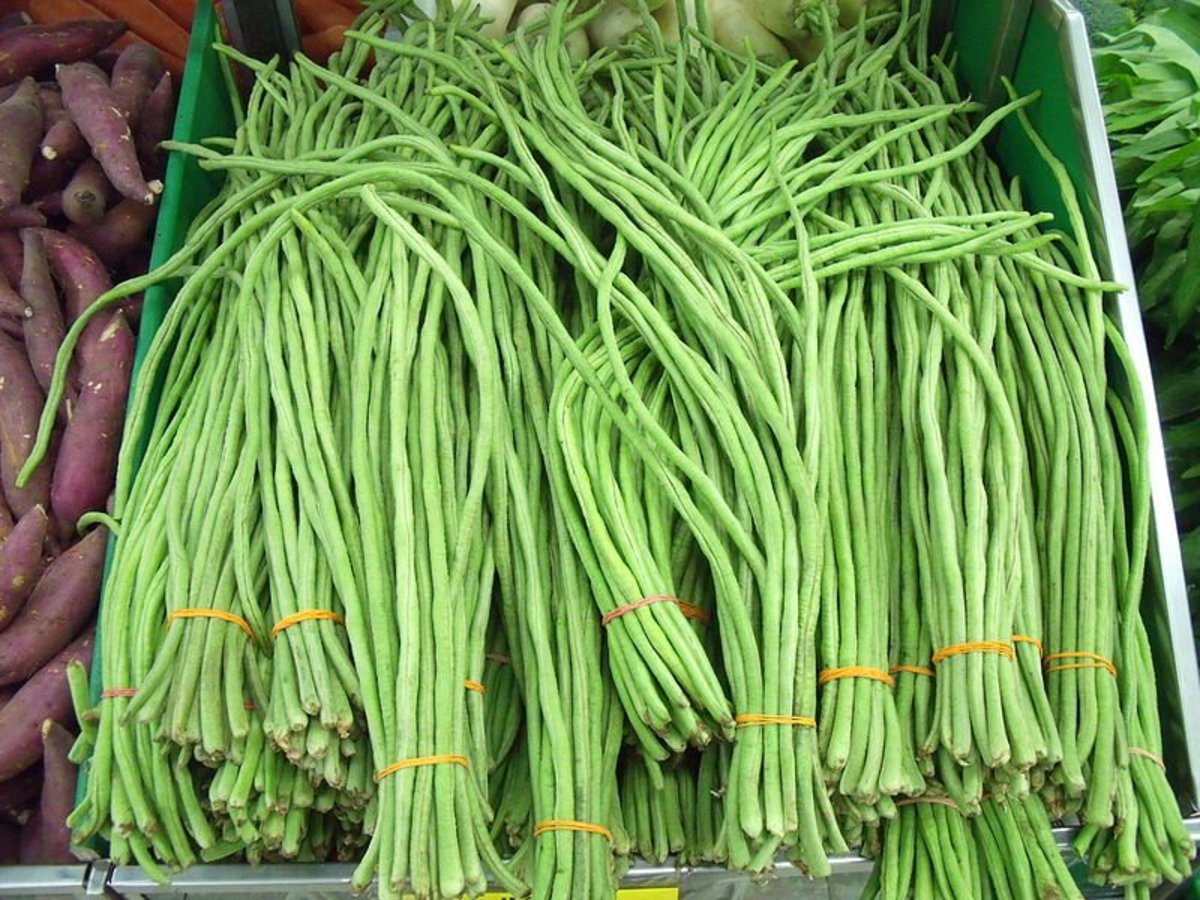- HubPages»
- Home and Garden»
- Gardening»
- Planting Vegetables
Grow Potatoes Successfully
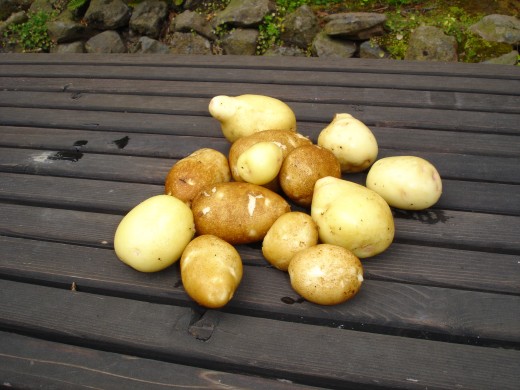
There is nothing more fun, relative to growing vegetables, then harvesting container-grown potatoes. It’s just like digging for buried treasure! Your hands swim blindly beneath the potato plant until they discover a tuber. You carefully explore the girth wondering as you go “Will this one have to wait, is it perfect size for a new potato, or is it a super spud ready to grace the stew pot or roasting pan?” When you extract that beautiful potato and brush the dirt off, you can hardly resist diving in for another search and discover mission. I find it so addictive I regularly harvest more potatoes than my household can use in a meal and my neighbors reap the rewards of my potato hunt mania.
There are, of course, other reasons to grow potatoes. For one, home grown potatoes are far tastier than any spud you will buy at the store – so creamy and buttery you won’t need to add anything other than salt and pepper, or maybe a little chicken broth or salsa. Second, potatoes provide more protein calories per acre than any other crop, and are so nutritious you can live on nothing but potatoes for quite a long time, as the Irish peasants did until the great Potato Famine. Last, potatoes are fairly easy to grow. Follow these steps and you will soon be digging for your own buried treasure!
- Gurney's Seed and Nursery
A large variety of seed potatoes are available. - Maine Potato Lady
HELLO! In more than a decades work with seed potatoes, I have become known to many of you as The Potato Lady, helping you to select the right varieties for your garden, and offering growing hints drawn from my own experience as a successful organic f - Johnny's Selected Seeds
All of Johnny's potatoes are "Certified Potato Seed Grade" - the choice of professional potato farmers. The crops are subjected to a rigorous State inspection program to ensure these seed potatoes are true-to-type and free of disease. In addition, Ce - Ronniger Potato Farm LLC
Ronniger Potato Farm, Potato Planting, Potato Culture, Potato Harvest, Potato Storage, potatoes
Seeds or Seed Potatoes?
Seeds or seed potatoes? Seed potatoes are basically hunks of potato with sprouted “eyes”, as opposed to actual potato seeds. The one advantage sung by suppliers of potato seeds is that they produce smaller plants; which is great if you have limited space. I’ve tried potato seeds and this is true; but they also produce smaller yields and smaller potatoes and take a heck of a lot longer to mature. My advice: go with seed potatoes and buy them certified disease-free from a reputable vendor. You can plant market potatoes, but you have no guarantee they will not transmit virus diseases into your garden. Yukon Gold is my favorite cultivar, but also try Kennebec, fingerlings or any other variety you can’t get at the store. One pound of potatoes plants a row approximately 8 feet long. Many of the seed potato suppliers have calculators on their website to help you determine how much to buy and plant.
Opposite are only four suppliers of seed potato. Do a Google search for many other high-quality organic suppliers.
Prepare for Planting
This is a process called chitting (sprouting). Chitting helps ensure better, quicker stands of tubers and higher yields. To chit your seed potato set them out in open flats in indirect light and mild temperatures (55° to 65° F) about two or three weeks before planting to encourage “eyes” to sprout. The goal is to obtain at least 2 eyes for each 1” to 2” piece of tuber. Once the sprouts are about ½ inch long, cut the tuber into pieces approximately 1-1/2” long weighing about 1-1/2 to 2 ounces each. Make sure each piece has at least two eyes. (Potatoes less than 2” can be planted whole). Allow the cut potatoes to “heal” for a couple days in a cool, dark place. Inside a paper bag is good. Take care not to break the sprouts.
Prepare the Soil
Potatoes like loose, well dug soil with an average nutritional content. Use compost as a fertilizer instead of manure. Fresh manure is way too “hot” and will cause scab. If you used aged manure, incorporate is shallowly at least 4 weeks before planting or soil microbes will deprive your germinating spuds of vital nutrients and water.
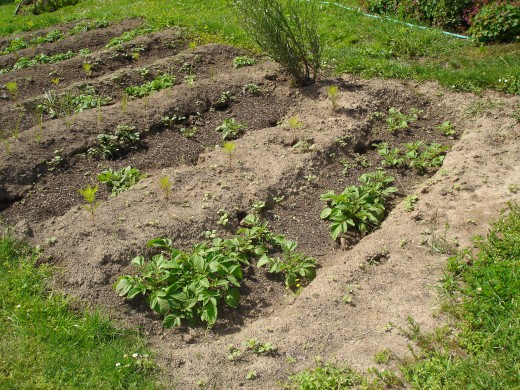
Plant the Potatoes
Potatoes are a classic spring crop so set them out about 3 weeks before your last spring frost date but make sure soil temps are at least 45°F (warmer is better). New potatoes only form above the chitted seed spud, so the deeper you plant it the higher your potential yield. If you plant them direct in the garden or raised beds, dig a trench 2 to 3 feet deep, set them in eyes up, and cover with 3 inches of soil. If you plant in containers, put 3 inches of soil in the bottom, set them in, and cover with 3 inches of soil. (You can cover them with up to 8 inches of soil if it is very loose and at least 60°)
Space Them Correctly
Supposedly potatoes planted on 9 inch centers (roughly 2 per square foot) will provide the highest yields. I’ve tried this and get good yields but smaller potatoes. If you want the big spuds, space them on 12 inch centers.
Hilling
When the potato plants are about 12 inches high you want to “hill” them (cover them with soil) until just a couple inches are poking through. Hoe or rake a mound of soil up and around them. Don’t worry, this won’t hurt the plants and protects them from the sun, which turns them green. It also increases the planting depth and, consequently, the yield. I hill again about three weeks later.
Feeding and Watering
Spray the plant’s leaves with fish emulsion or liquid kelp fertilizer just before you hill them the first time and a second time just after they flower. This gives them a nice nitrogen boost.
Potatoes need soil that is evenly moist but not water logged. Make sure the water soaks down to full depth of the planting.
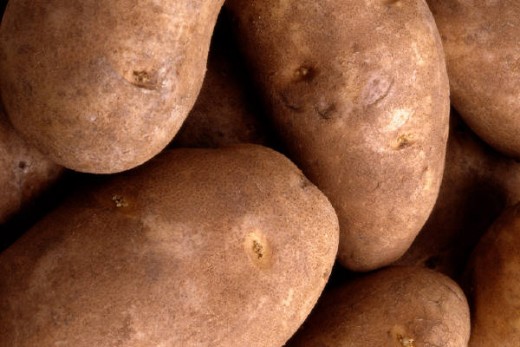
The Harvest
One week after flowers appear new potatoes are ready! This is usually 50 to 60 days after planting. You can pull one plant, leaving those around it unmolested, or feel around under the plants and take no more then two tubers per plant. Take only as much as you can eat in two days to ensure maximum freshness. (Although as I have said, harvesting is so much fun this is easier said than done!) When the foliage dies back, the main crop of spuds is ready! Use a garden fork to gently loosen the soil and expose your buried treasure.
Tips
Seed potatoes do not like water logged soil because they have a tendency to rot. Cover your planned potato patch with plastic a few weeks before planting time if you have a very wet spring. This will give it some time to dry out.
New potatoes only form about the “chitted” seed spud, so the deeper you plant it the higher your potential yield.
Potatoes are a great container plant because container soil warms up much faster than garden soil. Plastic garbage cans make great potato-growing bins.
Don’t use a shovel or spade to dig potatoes – you may damage them by nicking or slicing through them. Besides, it’s much more fun to use your hands!

